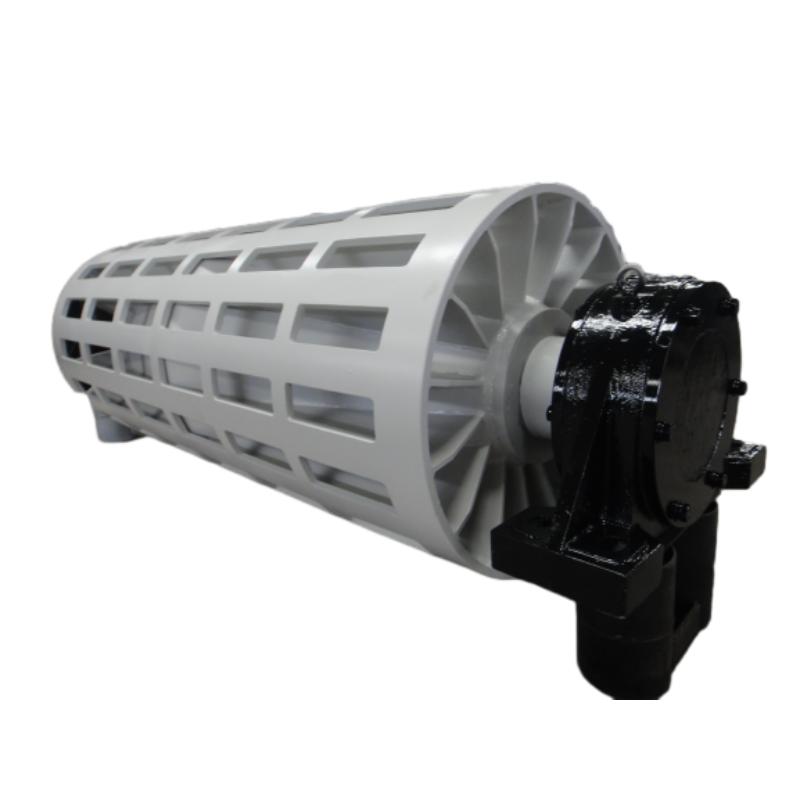Belt Conveyor Pulley - Heavy-Duty, Balanced, Customizable
Heavy-Duty Slagging Pulley: the unsung guardian of clean belts
Let’s talk about the humble belt conveyor pulley that keeps your return side honest. Raohua’s Slagging Pulley (Heavy Duty) is built for wide belts and brutal loads, scrubbing off carryback on the non-working surface so your idlers, scrapers, and transfer points breathe easier. I’ve seen operations underestimate this component—until the day fines pile up, belts wander, and maintenance calls spike at 3 a.m.
Origin: East Outer Ring Road, Yanshan County, Cangzhou City, Hebei Province, China. That’s an old metalworking corridor—people there know their steel.

What’s trending in pulleys (and why it matters)
In fact, the trend is pretty clear: tougher shells, smarter lagging, and tighter runout. Mines and steel plants push for ISO-grade balancing, ceramic/rubber hybrids for bite, and coatings that survive C4/C5 corrosion zones. Predictive maintenance is creeping in too—vibration baselines on every belt conveyor pulley, not just drives. It seems boring… until downtime eats a shift.
Product snapshot: Slagging Pulley (Heavy Duty)
| Shell material | Welded steel plate (Q235/Q345), full-penetration seams |
| Diameter range | ≈ Ø315–1250 mm (real-world selections vary by load/span) |
| Face width | ≈ 500–2200 mm for wide belts |
| Lagging options | Rubber 10–20 mm, ceramic tiles for abrasive slurry duty |
| Balance grade | ISO 1940-1 G16 standard; G6.3 optional |
| Runout (TIR) | ≈ ≤0.8–1.5 mm depending on size |
| Surface protection | Epoxy primer + PU topcoat to ISO 12944 C3/C4 |
| Service life | ≈ 40,000–60,000 h with proper alignment and sealing |
| Sealing | Labyrinth + double-lip; IP65–IP66 style |
How it’s built (quick but real)
- Materials: Q235/Q345 shells, 45# or 42CrMo shafts, selectable lagging compounds.
- Methods: submerged arc welding, stress relief, precision machining, dynamic balancing.
- Testing: welds to ISO 5817; NDT (UT/MPI) per ISO 17640; balancing per ISO 1940-1; runout check; hardness ≈ 60±5 Shore A (rubber).
- Standards/design references: DIN 22101, CEMA; coating to ISO 12944.

Where it shines
Mining (ore and overburden), steel and coking plants, power plants, cement, ports, and aggregate. Anywhere carryback is chewing through idlers, a belt conveyor pulley set up for slagging keeps the return side clean, reduces mistracking, and frankly saves scraper blades.
Vendor snapshot (what buyers actually ask me)
| Vendor | Pros | Trade-offs |
|---|---|---|
| Raohua (Hebei) | Heavy-duty build, balancing certificates, custom lagging, decent lead time | Slightly higher freight if you’re far from North China |
| Generic import | Lower upfront price | Specs vary; certificates sometimes thin; longer QA cycles |
| Local fabricator | Fast service, easy site visits | May lack ceramic options or ISO balancing documentation |
Customization (because one belt conveyor pulley does not fit all)
Dial in diameter/face width, shaft material, bearing series, sealing stacks, lagging pattern (diamond/ceramic tiles), Taper-Lock or keyed hubs, paint system for C3–C5, and balance grade. Real-world advice: match lagging hardness to your fines and moisture levels.
Field notes and a quick case
A northern China steel plant swapped three return-side units for heavy-duty slagging pulleys. Carryback dropped ≈ 35% (maintenance logs), idler changeouts fell from weekly to biweekly, and belt tracking alarms calmed down. To be honest, the operators were most excited about quieter nights. Another quarry client told me the ceramic-lag option “finally stopped the wet clay smear.”

Bottom line: if your return side is dirty, you’re paying for it somewhere. A properly balanced, well-lagged belt conveyor pulley for slagging duty is cheap insurance.
References
- CEMA: Belt Conveyors for Bulk Materials, 7th ed.
- ISO 1940-1: Mechanical vibration — Balance quality requirements for rotors.
- DIN 22101: Continuous conveyors — Belt conveyors for loose bulk materials.
- ISO 12944: Paints and varnishes — Corrosion protection of steel structures.
- ISO 5817: Welding — Fusion-welded joints in steel.
-
Impact Roller for Belt Conveyor – Durable Solutions for IndustryNewsNov.24,2025
-
Rubber Conveyor Rollers – Quiet, Durable, Sealed BearingsNewsNov.24,2025
-
Industrial Conveyor Belt Rollers: Durable Solutions for Harsh EnvironmentsNewsNov.24,2025
-
Idler Rollers for Belt Conveyors | Durable, Low-Noise OEMNewsNov.24,2025
-
Durable Rubber Conveyor Belt Rollers for Industrial UseNewsNov.24,2025
-
Ceramic Lagging Conveyor Pulley – Anti-Slip, Wear-ResistantNewsNov.17,2025






























